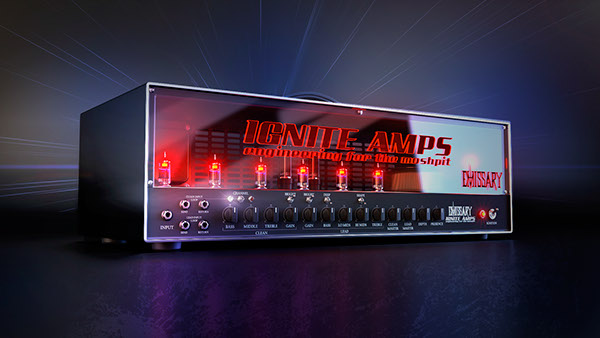 Warning: BAD guitar playing ahead. Really bad.
Warning: BAD guitar playing ahead. Really bad.
I think this might be the last generation of traditional guitar rigs (meaning a tube amp, a 4×12, and a microphone). Digital amps have gone from unconvincing crap to a real alternative for people who care about tone. The only downside at the moment is that they all have metal on the brain – that is, there aren’t many good amp sims for people who understand that Spinal Tap is meant to be a joke.
Free, decent emulations currently exist for the Bogner Ecstasy (LePou’s LeXTac), the Mesa Boogie Single Rectifier (LePou’s LeCTo), the Peavey 5150 (Nick Crow’s 8505, LePou’s X50), the ENGL Powerball (Lepou’s Le456), the ENGL e530 (LePou’s TSE X30), and some weird hybrid digital amps, like LePou’s HyBrit (which is based off a combination of Marshall SLP59 and JCM800 circuitry), and the (awesome sounding) LeGioN, which was derived from Engl’s general approach to guitar amps.
See the common thread? Except for the Ecstasy and (perhaps) the HyBrit, these are all high-gain amps. If you want to play an iconic low-gain amp like the Vox AC30 on your computer, you’re shit out of luck…unless there’s some commercial option I don’t know about. Nobody seems to care about emulating bass amps, either.
Regardless, I tried to recreate some tones that are a bit more diverse than Meshuggah or Periphery. These were all recorded with an ESP LTD guitar with a DiMarzio X2N in the bridge, and then into some free amp sims and impulse responses. I haven’t even made an attempt to get into the same tuning as these songs, which affects the tone a bit. And some of them were meant to be quad-tracked, but I only dual-tracked them.
Motley Crue tone:
https://dl.dropboxusercontent.com/u/25331585/motleycruetone-001.mp3
Forget Slash. The holy trinity of 80s hair metal guitarists is Eddie Van Halen, Nuno Bettencourt, and Mick Mars. Mars’s tone is a logical progression of Aerosmith’s and on Dr Feelgood it sounds really fucking excellent. That record, by the way, was responsible for Metallica hiring Bob Rock to produce their albums from 1991-2003. This supports my theory that every metal musician is at most six degrees separate from St Anger.
Generic 90s punk rock tone (think Green Day or Bad Religion):
https://dl.dropboxusercontent.com/u/25331585/90spunkrocktone.mp3
Billie Joe Armstrong used a modified Marshall 1959 SLP when recording Dookie. He and Rob Cavallo went for a really dry and sterile sound on that album, but I put some reverb on this. It didn’t sound full enough without it.
Linkin Park Hybrid Theory tone
https://dl.dropboxusercontent.com/u/25331585/linkinpark-001.mp3
Whether you think Linkin Park is a cool band or purveyors of a formula that was already old when the eldest member’s fingers were developing in the womb, I really like Brad Delson’s tone. Crushing, yet strangely organic and alive. Sort of a middle road between “scratchy, underproduced, and annoying” (see: Slipknot, Korn), and “digitally processed into oblivion” (see: Rammstein).
Nine Inch Nail’s Broken Tone
https://dl.dropboxusercontent.com/u/25331585/nintone.mp3
This is the guitar part from “Pinion”, which I like for its pulsing, lurching power, and its example of what can be done with chromatic notes. Trent Reznor is famous as a producer, but he’s been known to do interesting things with guitars from time to time. He eschewed tradition and did some really lo-fi things for NIN’s early work (like plugging a Zoom distortion pedal directly into the mixing desk). On the Broken EP, I believe he used he used a Marshall JMP-1. To recreate his sound, I used an amp sim with no cab impulse.
No Comments »
Comments are moderated and may take up to 24 hours to appear.
No comments yet.
